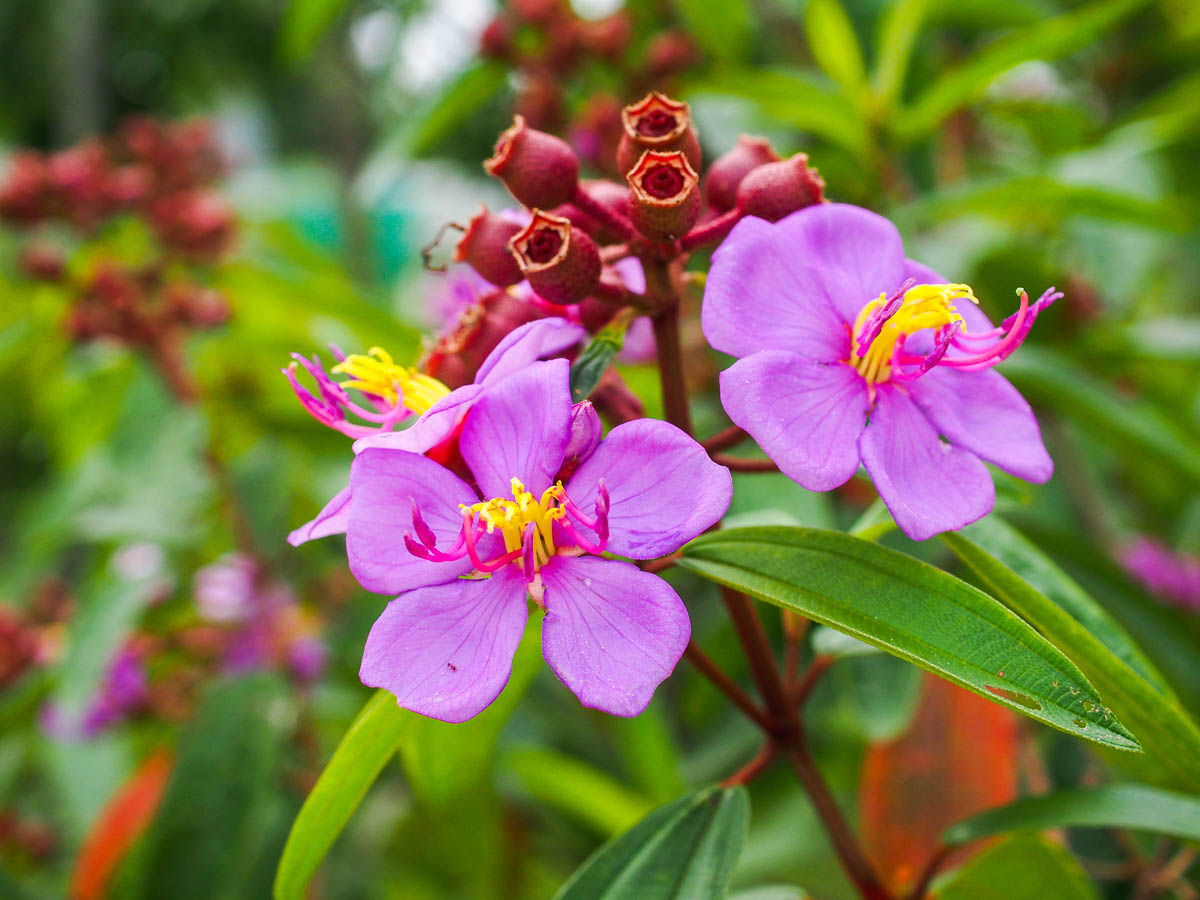Singapore Rhododendron
Singapore Rhododendron (Melastoma malabathricum)
Other common names: Common Sendudok, Indian Rhododendron, Sesenduk, Malabar Gooseberry, Straits Rhododendron, Sendudok, Senduduk, 野牡丹

Singapore Rhododendrons are hardy free-flowering shrubs that are commonly seen in rewilding areas, nature parks, in roadside gardens, and biodiversity-attracting gardens. The flowers are highly attractive to bees, while the fruits attract birds and small mammals. The fruits and leaves are also edible. This plant is native to Singapore and is naturally found growing along secondary rainforest and open fields.
A perennial shrub, Singapore Rhododendrons are useful as biodiversity-attracting plants and perimeter plants to add a pop of colour to any garden.
Sun and soil needs:
This plant thrives in 4-8 hours of direct or indirect sunlight. Plants do best in loamy soil at least 30cm deep in true ground. This plant is highly tolerant of waterlogged soils and can be used in true ground with high clay content, in waterlogged gardens that are prone to flooding, in areas exposed to large amounts of rain, and next to ponds.
Growing:
Singapore Rhododendrons are rapid growers and generally does not need fertilizing. The shrub can rapidly grow up to 5m in height and will need to be pruned regularly. Regular pruning to promote airflow will keep the plant healthy and neat.
Propagation:
Singapore Rhododendrons can be grown from seed or woody cuttings with rooting hormone.
Common problems & solutions:
This plant is relatively resistant to pests and disease if kept healthy.
This plant can be considered weedy if left unmanaged. Regularly prune the plant to maintain its size and remove accidental seedlings if found.
Aphids, Mealy Bugs, and Scale Insects often infest the plant if it has underlying problems like repeated wilting from heat stress. Mechanical pest control methods like pruning the infested parts are the best methods for managing these pests in the short term, but resolving the underlying problem will prevent them in the long term.

